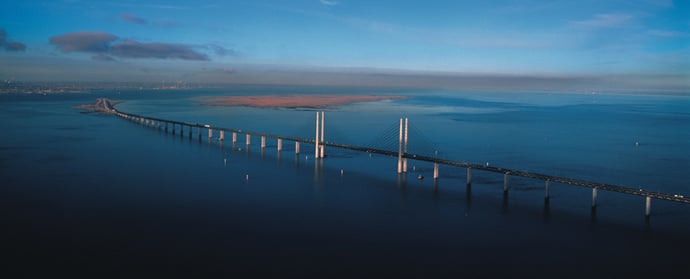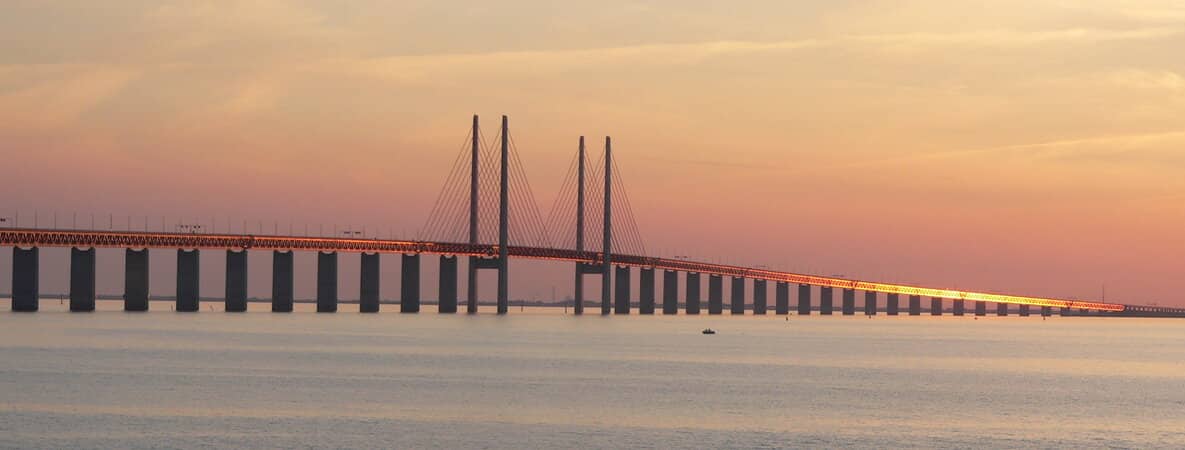The Øresund link (in Danish: "Øresundsforbindelsen") is one of the most ambitious construction projects ever and connects the Danish capital Copenhagen with the Swedish city of Malmö. It took almost seven years from the start of construction in September 1993 to the start of operations in July 2000.
The route between the Scandinavian countries not only runs via the famous bridge over the sparkling blue sea and the eponymous Öresund, but also right through it: Along parts of the route, the so-called Drogden Tunnel divides the sea and enables a journey through the bowels of the earth. As if that wasn't enough of an architectural feat, the bridge and tunnel come together on the artificial island of Peberholm, which was created especially for the crossing.

Öresund Bridge Photo: © VisitDenmark, Jan Kofoed Winther
If you are traveling from Denmark to Sweden via the Öresund Bridge, your journey begins on the island of Amager. It is part of Copenhagen, connected to the local transport network and has an entrance to the 3,510-metre-long Drogden Tunnel. This ends on the 4,055 meter long Peberholm island strip. There, train and car traffic flow at ground level over a distance of 3,014 meters and then merge into the 7,845 meter long Öresund Bridge. At the end of the bridge, you are greeted by the town of Lernacken on the Swedish mainland. You can also cross the sound between Denmark and Sweden by train. There are several stops between the main train stations in Copenhagen and Malmö, for example at Copenhagen Kastrup Airport. Trains run daily at regular intervals around the clock from one country to the other.






















